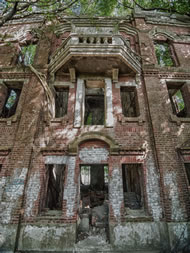Engineering superheroes
Dr Louise Walker, Senior Research Manager at CIRIA discusses blue-green infrastructure assets.
Victorian engineering was a marvel. Much of it is still in use like Bazalgette’s sewer system in London. Rows of terraced houses and some of our most iconic buildings continue to be perfectly functional and beautiful and will probably last for many more years to come. What must it have been like back then, all that development going on so quickly, completely changing the urban landscape?
Back then, there was a lot of money around, funds from the Empire (not something to be proud of but a fact of history), enabling high quality engineering. At the time engineering was a high status profession, its experts revered as providers of improved public health and wellbeing.
How things have changed with little money available these days. Now it’s all about having to work smarter and leaner, while still prioritising health and safety of workers and the public. New infrastructure needs to be rigorously managed throughout its lifetime, ensuring it is properly maintained at the right time, replaced when necessary, decommissioned safely and its elements recycled or reused where possible. The asset managers are responsible for the success of the projects. We are all asset managers to some degree, as we plan maintenance and investment in our homes, cars, gardens etc.
Part of working smarter is also about including blue and green infrastructure (BGI) into development and regeneration where ever we can. The multiple benefits of BGI are wide-ranging: the more natural features included the better the local environment. There is a wealth of academic literature that shows how BGI benefits society and the economy as well as the environment, and our new online tool ciriabest provides monetary estimates to demonstrate the potential return on investment of such projects.
So if we know that BGI is such a valuable asset, do we know that asset management systems which were created for the more conventional infrastructure projects are applicable? If we implement BGI with an important flood risk management function for example, do current asset management processes address how to manage it throughout its lifetime? Are multifunctional elements such as urban cooling and amenity provision taken into account in that functionality? Is the constantly changing and growing aspect of BGI considered? Does the monitoring and maintenance programme consider how BGI will become a habitat in its own right?
This is what we are looking at in our Asset management for blue-green infrastructure project. With a group of expert stakeholders with different types of asset to manage, we are reviewing existing asset management frameworks and developing guiding principles for the inclusion of BGI.
I saw a fantastic presentation on ecological succession last week (thank you David from NatureScot) and it made me think. This is what we are all doing, for both conventional infrastructure and BGI asset management, we are managing ecological succession.
Some of those Victorian buildings have been left without management, and while still standing they do not provide the functionality they were built for. Nature is taking over (see example image to the right); beginning its process of ecological succession. How this happens and how long it takes is very context dependent, but the pioneer species invade, take hold and change the conditions which allows a different set of species to take over and so on until a ‘climax community’ is achieved – unless the process is knocked back by outside events.
|
 |
To keep our infrastructure functional we need to manage the ecological succession. Weekly mowing of the lawn and treating it with chemicals to keep it as a monoculture is holding back succession. That may be appropriate for a football pitch, but where BGI is implemented with habitat provision as one of its main functions, succession is managed to a different stage and its asset management schedule should acknowledge how. Particularly where there may have been a change such as a rewilded corner of a public park.
If everyone from designer to maintenance contractor understands the purpose and function of BGI within a framework they recognize this will make the asset manager’s job much easier. We have moved from a reliance on engineering to improve our lives to a more holistic view which recognises and embraces nature. This change has become a necessity. The growth in industry since those Victorian times has impacted the environment to such a degree that urgent action is now needed to both halt and adapt to those impacts. If we get this right and understand the valuable assets we have in nature future generations may even be able to reverse those impacts. Engineering is not the popular career choice it once was but these highly skilled people are vital, and those engineers who work with equally highly skilled people from the range of disciplines needed to ensure high quality BGI, including asset managers, should be revered today, they will be the superheroes we need.
If you would like to financially support the guidance development of our Asset management for blue green infrastructure project, which guarantees a place on the project steering group, please contact Louise Walker at CIRIA.